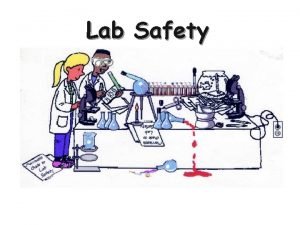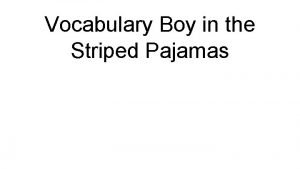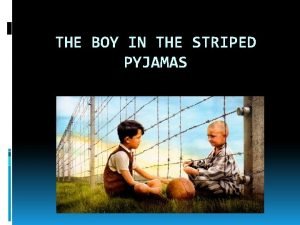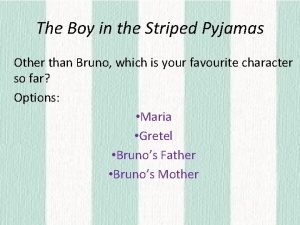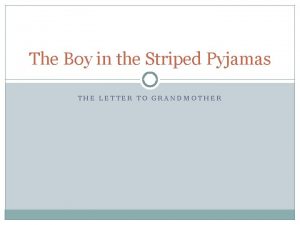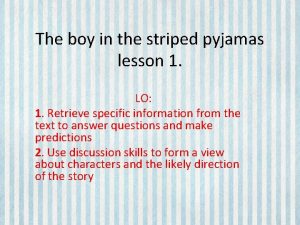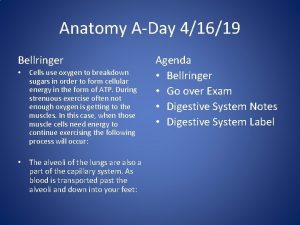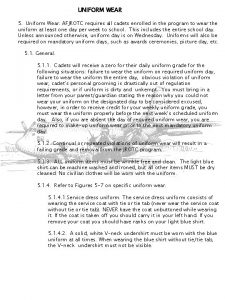Agenda 41619 National Wear Your Pajamas to Work















- Slides: 15

Agenda 4/16/19 • • • National Wear Your Pajamas to Work Day Serial Killer Brief Overview Start Project

Serial Killers

Forensic Psychology Where law meets the study of the mind, you’ll find the Forensic psychiatric/psychological professional. → Psychiatrist is a medical doctor – medical treatment of the psyche → Psychologist is not a medical doctor – study of the mind and behavior → BOTH – mental health professionals – expertise is the mind and the way it affects behavior and well-being WHY? • The law and medical aspects of crime are often at odds. → Insane or not? → Competent to stand trial or not?

Types of Murderers • Mass Murderer – kill 4 or more people in one place at one time. • Have clear agenda – know why • No “cooling-off” period • May want to send a “message. ” • Higher the death toll – better the job done • Typically ends with death of perpetrator – suicide or killed by law enforcement

Some Famous Mass Murderers August 1, 1966 – Charles Whitman • Killed 14 people and injured dozens in shooting from the top of a tower on the campus of the University of Texas. • Entire episode lasted 90 minutes. July 20, 2012 – James Eagan Holmes • Killed 12 and injured 58 in Aurora, Colorado during a midnight screening of The Dark Knight Rises. • Entire episode lasted 7 minutes.

Some Famous Mass Murderers April 20, 1999 • Eric Harris and Dylan Klebold murder 13 and injure 21 in a high school in Columbine, Colorado. • Entire episode lasted an estimated 90 minutes • September 15, 1963 • 16 th Street Baptist Church in Birmingham, Alabama was bombed by 4 KKK members killing 4 children and injuring 22.

Spree Murderers • A spree killer is much like a serial killer. – CHARACTERISTICS • • Kills more than one person at two or more locations. Happens quickly – with no cooling off period. Killer is constantly moving…hiding, running, planning. Often end with suicide. • 1957 -1958 • 1997 • Andrew Cunanan • Killed 5 men in 4 states (Mn, Il. NJ, Fl) • Time: 3 months • Committed suicide • Charles Starkweather and Caril Fugate. • Murdered 11 people in 6 weeks – Nebraska • Starkweather …got the chair 1959. Fugate. . Paroled in 1977

The Serial Killer • • • Kill three or more people over a period of more than a month Cooling off time in between…. may be as long as 3 months Uses the time to unwind…come down off the “killing high” Motivation for killing is usually based on psychological gratification Rarely display a clearly define or rational motive

Criminal Profiling • Possible solution to battling serial offences • A behavioral and investigative tool that is intended to help investigators to accurately predict and profile the characteristics of unknown criminal subjects or offenders.

Criminal Profiling Some Assumptions of the Profiling Process 1. The Crime Scene reflects the personality. – – Manner of death Organized or disorganized crime scene 2. Methods of operation remain similar. - Clues left could be a “signature” of the killer. 3. The “signature” will remain the same. - Unique manner in which a crime is committed. Manner, words used, something left at the scene. 4. The criminal’s personality will not change. - Core personality cannot change.

F. B. I. Crime Scene Analysis Distinguishes two types of crime scenes as the basis of psychological profiling: Organized Offender • • • High intelligence Socially adequate Sexually competent Lives with a partner High birth order status Father had/has stable work Childhood discipline inconsistent Situational stress causes crime Charming Is mobile Follows crime in media TED BUNDY Disorganized Offender • • Below average intelligence Socially inadequate Sexually incompetent Works at unskilled labor Low birth order status Father had/has unstable work Received harsh discipline as child • Mood is anxious during crime • Stress not a factor in causing crime • Lives alone/does not date • Poor personal hygiene • Not interested in media • Nocturnal • Significant behavior changes after crime RICHARD RAMIREZ

A Comparison of Crime Scenes Organized • • • Planned Victim targeted Personalized victim Controlled conversations Controlled crime scene Submissive victim Restraints used Aggressive acts Body is moved Weapon taken Little evidence Disorganized • • • Spontaneous event Victim unknown Depersonalizes victim Minimal conversation Chaotic crime scene Sudden violence No restraints Sex after death Body not moved Weapon left Physical evidence

Serial Murderer - Types • Visionary – “sees things”; psychopathic, directed by “another being” (David Berkowitz) • Missionary – need to eradicate a certain group, not psychotic. (Joseph Paul Franklin) • Hedonistic – seeks thrill and derives pleasure from killing. (Dahmer) • Power/Control – sexual gratification from dominance of victim…power of life and death. (Bundy)

Common Characteristics of Serial Killers • White male • Age 25 -35 • Intelligence – ranges from low to very high • From all walks of life – May be the married man next door with kids • OR – Socially inept/unable to maintain relationship/ loner • Kill for sex, power, manipulation,

Common Characteristics of Victims • Usually kill within ethnic group • Age of victims varies greatly (depending on murder) • Usually no prior contact/hatred for victim • Victims may be symbolic in some way
 R
R Agenda sistemica y agenda institucional
Agenda sistemica y agenda institucional Wear goggles in lab
Wear goggles in lab How to wash jrotc uniform
How to wash jrotc uniform Read and write in your notebook
Read and write in your notebook Uae national agenda for schools
Uae national agenda for schools National honor society meeting agenda
National honor society meeting agenda Cohesive society and preserved identity
Cohesive society and preserved identity The boy in the striped pyjamas chapter 14
The boy in the striped pyjamas chapter 14 Eva braun the boy in the striped pajamas
Eva braun the boy in the striped pajamas What is the setting of the boy in the striped pajamas
What is the setting of the boy in the striped pajamas The boy in the striped pyjamas maria
The boy in the striped pyjamas maria The boy in the striped pajamas movie
The boy in the striped pajamas movie The boy in the striped pajamas trailer
The boy in the striped pajamas trailer Bruno's letter to grandmother
Bruno's letter to grandmother Why did bruno's family suddenly moved house
Why did bruno's family suddenly moved house


